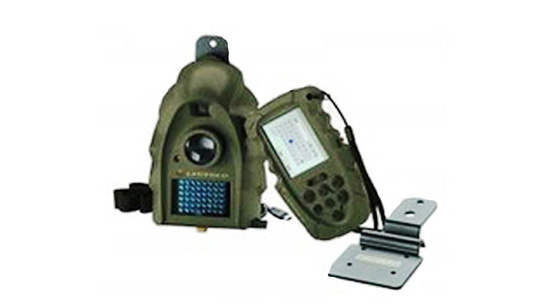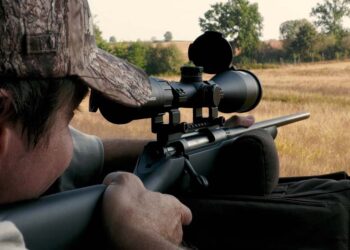 Camera trapping: In the hunting and documentary field, the latest generation camera traps are taking hold, with which it is possible to immortalize images and moments of life in the woods and forests. Leupold presents the RCX-1 and RCX-2 camera traps: from today the game will have no more secrets.
Camera trapping: In the hunting and documentary field, the latest generation camera traps are taking hold, with which it is possible to immortalize images and moments of life in the woods and forests. Leupold presents the RCX-1 and RCX-2 camera traps: from today the game will have no more secrets.
In the United States, trail cameras have been used for a long time (literally "cameras of hunting routes, in Italian" Fototrappole "), with which it is possible to monitor the passage areas of huntable animals, for a multitude of purposes to establish strategies hunting and obtain the most advantageous results from each hunt.
In old Europe, given the laws and restrictions on camera traps, the latter could be useful for capturing the secrets of the woods also for documentary purposes, for the surveillance of large wooded areas and for the monitoring of game reserves, just to mention the essentials. fields of application.
Until now the market has not been particularly prosperous for the offer of this kind of tools, and many trail scouts dedicated to "camera trapping" were often dissatisfied with the performance of the models available on the market. For this reason, the solution to these problems was found in the handcrafted construction of camera traps, through the use of commercial digital cameras capable of establishing the compromise between field of view, day and night performance, autonomy and memory. 
A solution that presented some risks, however, since the camera traps thus conceived are tools that must remain outside for a long time, secured to trees, at the mercy of atmospheric agents and, above all, within anyone's reach. In particular, atmospheric conditions are the main enemy of these instruments, since a case that is not perfectly watertight could suffer serious damage; the animals themselves being shot can be attracted by the natural curiosity towards the devices and damage them; finally, the theft by passers-by, who see very expensive electronic equipment.
In order to find a definitive solution to these problems, Leupold has dedicated itself to the development of specific devices for “camera trapping”, putting on the market the new series of RCX trail cameras. With a high degree of ruggedness, reliability and a natural profile polymer chassis, RCX camera traps mark the beginning of the evolution of camera traps.
The RCX camera traps work both as cameras and as video cameras with the possibility of audio or audio / video recording, depending on the version with the possibility of saving photos and videos in the most popular electronic formats inside a removable SDHC memory card. The memory capacity of the latter is 32 gigabytes, which allows their long-term use and is able to quickly transfer the audiovisual or photographic material collected on your personal computer.
RCX camera traps can be anchored to any support (pole, tree, fence, wall or whatever) either by means of a strap or by means of the special Lock-Down Security Plate, a small metal panel that allows support by means of screws, also acting as a hermetic closure for the camera trap chassis, thus protecting it from theft and vandalism.
There are two variants of this system available on the market: the RCX-1 and the RCX-2, similar in equipment, but different in performance. Both are powered by a Pack containing eight lithium-ion “Stylus” batteries, removable and rechargeable and using a 54 ° angle lens. What sets them apart is the image definition: 8 megapixels for the RCX-1, 10 megapixels for the RCX-2. The RCX camera traps are activated automatically, when the passive infrared proximity sensor is activated, which is single and with a range of 45 ° in the RCX-1, double and with a range of 10 ° and 45 ° in the RCX-2.
In the RCX-1 model, the sensor (PIR) activates when wildlife passes within a range of 45 feet (approximately 14 m), while in the RCX-2 model the distance can be adjusted up to 90 feet (27 and a half meters). Operation at night is ensured by a series of infrared LEDs, 36 in the RCX-1, 48 in the RCX-2, with the result identical to that of a photo taken with a camera equipped with an IR device.
The adjustment of the parameters and the programming of the two RCX models takes place through a special external controller, which is connected via the USB output to the camera trap. With the controller you can set the time and date and activate or deactivate the surrounding temperature sensor, adjust the activation parameters of the PIR sensor, the operating modes and the image quality, depending on the desired resolution. The controller also acts as a device to download the material taken from a camera trap and load it on a different support such as the PC, and can save the settings on its buffer memory, to allow the user to set the same parameters on multiple camera traps.
Leupold's RCX series can certainly be considered the best alternative available on the camera trap market. Furthermore, this company is ahead of its competitors. By entering a very particular market segment, which ranges from hunting to documentary.


 Camera trapping: In the hunting and documentary field, the latest generation camera traps are taking hold, with which it is possible to immortalize images and moments of life in the woods and forests. Leupold presents the RCX-1 and RCX-2 camera traps: from today the game will have no more secrets.
Camera trapping: In the hunting and documentary field, the latest generation camera traps are taking hold, with which it is possible to immortalize images and moments of life in the woods and forests. Leupold presents the RCX-1 and RCX-2 camera traps: from today the game will have no more secrets.


































